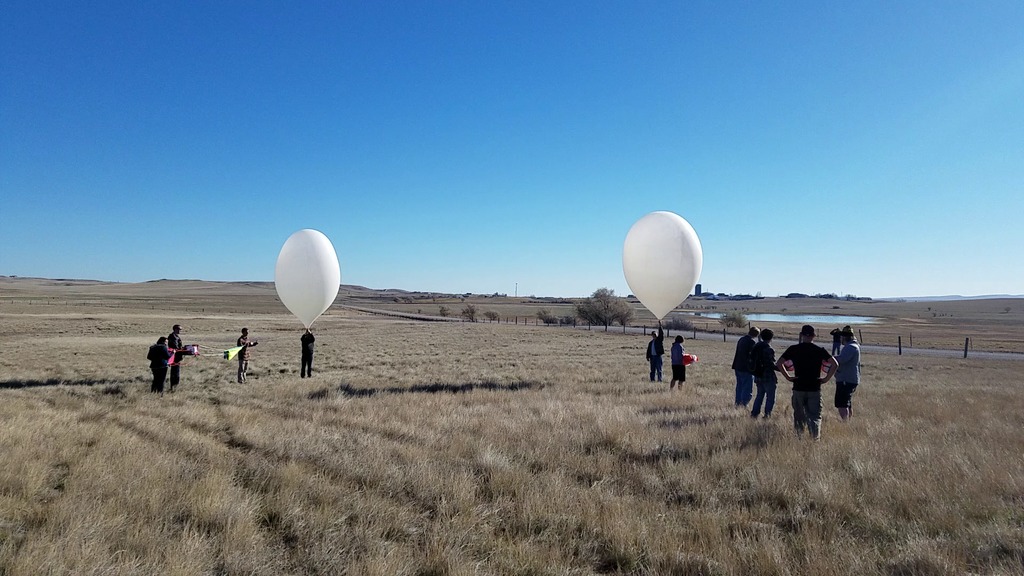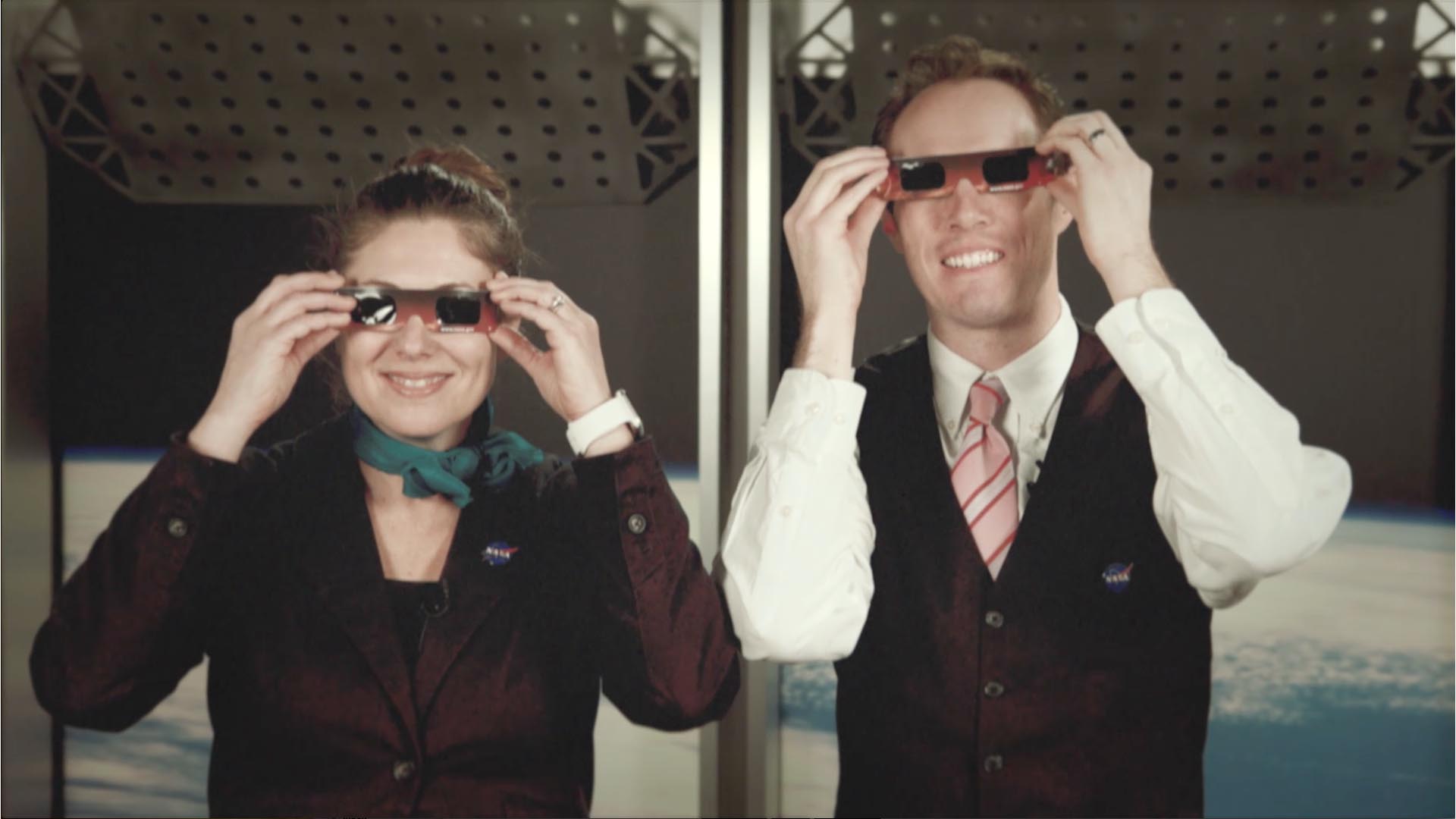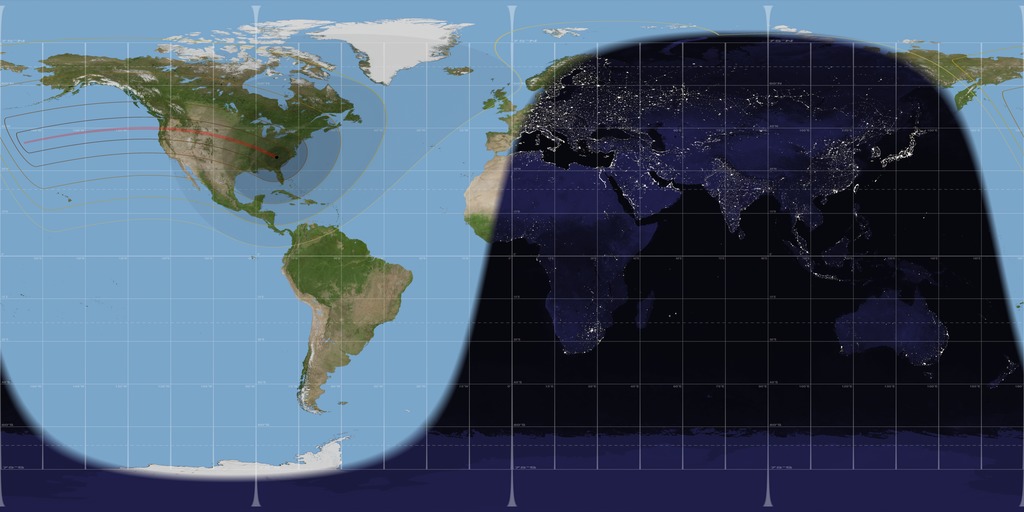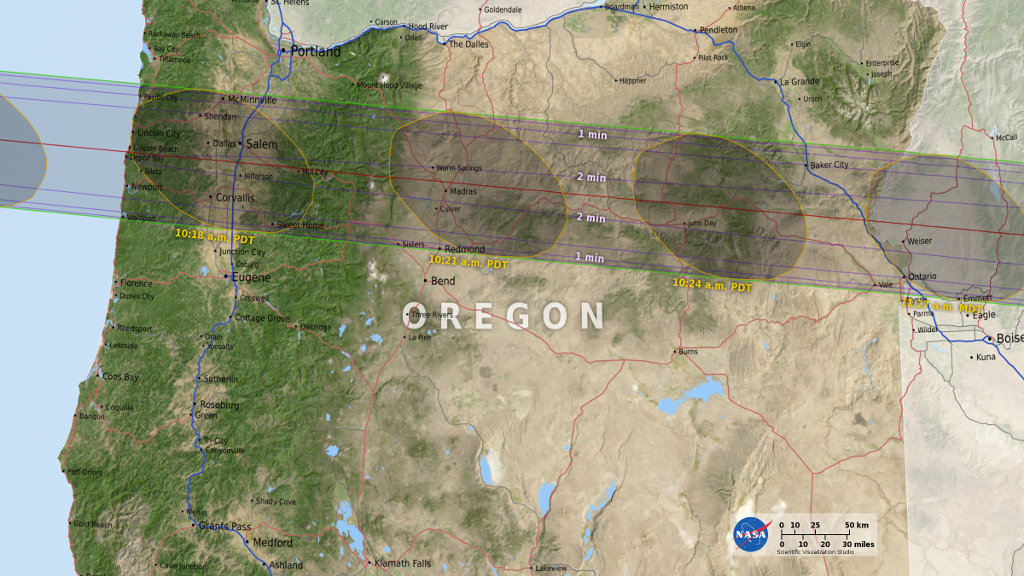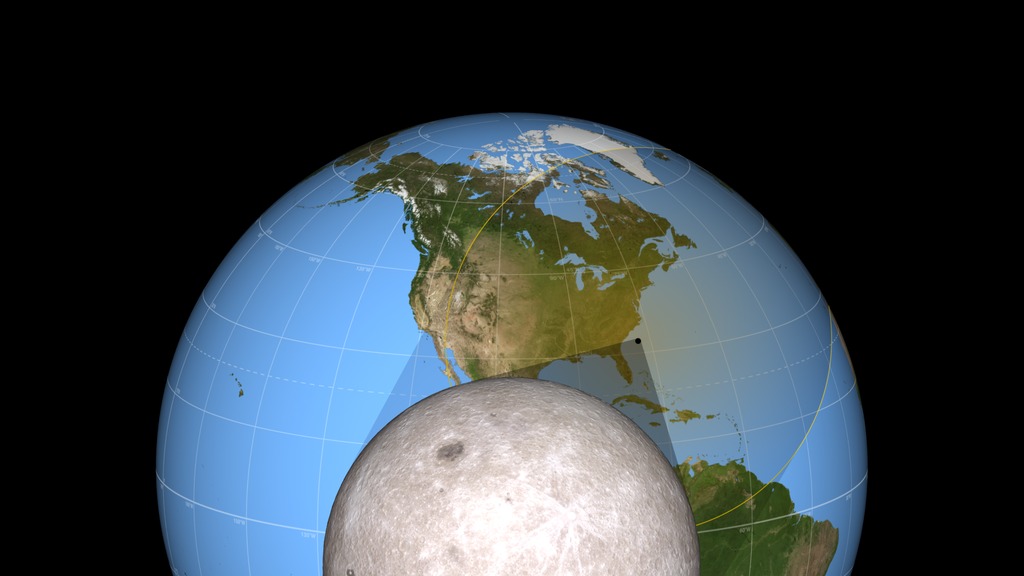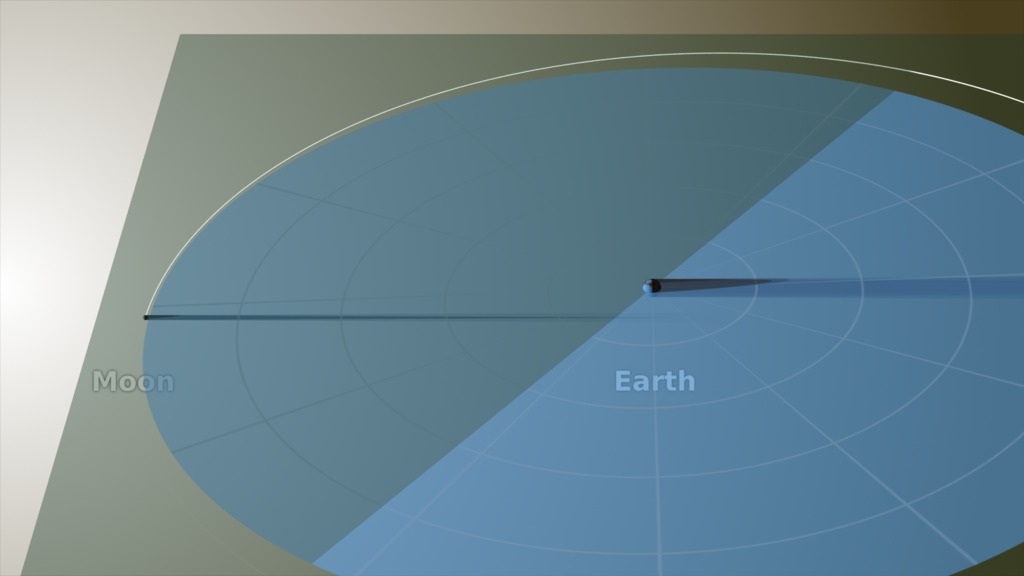Rare Total Solar Eclipse Is Only Two Months Away Live Shots 6.21.17
B-roll for the live shots
The Countdown is on for Rare Solar Eclipse Visible Across all of North America
For the First Time in Nearly 100 Years, Millions of Americans Coast-to-Coast Will see an Eclipse
Chat with NASA to find out how you can catch this spectacular event
For the First Time in Nearly 100 Years, Millions of Americans Coast-to-Coast Will see an Eclipse
Chat with NASA to find out how you can catch this spectacular event
On August 21, 2017, daylight will fade to the level of a moonlit night as millions of Americans experience one of nature’s most awe-inspiring shows – a total solar eclipse. For the first time since 1918, the dark shadow of the moon will sweep coast-to-coast across the United States, putting 14 states in the path of totality and providing a spectacular view of a partial eclipse across all 50 states.
NASA scientists are available Wednesday, June 21, from 6:00 a.m. – 12:00 p.m. ET to show your viewers the path of the eclipse, what they need to see it safely and talk about the unprecedented science that will be gathered from one of the most anticipated and widely observed celestial events in history. We’ll also give your viewers a sneak peek of a press conference about the eclipse NASA is having later that day. A solar eclipse happens when a rare alignment of the sun and moon casts a shadow on Earth. NASA knows the shape of the moon better than any other planetary body, and this data allows us to accurately predict the shape of the shadow as it falls on the face of Earth. While everyone in the U.S. will see the eclipse if their local skies are clear, people standing in the path of totality – completely in the moon’s shadow – will see stars and planets become visible in what is normally a sunlit sky. Eclipses provide an unprecedented opportunity for us to see the sun’s faint outer atmosphere in a way that cannot be replicated by current human-made instruments. Scientists believe this region of the sun is the main driver for the sun’s constant outpouring of radiation, known as the solar wind, as well as powerful bursts of solar material that can be harmful to our satellites, orbiting astronauts and power grids on the ground. HD Satellite Coordinates for G17-K18/LO: Galaxy 17 Ku-band Xp 18 Slot Lower | 91.0 ° W Longitude | DL 12051.0 MHz | Vertical Polarity | QPSK/DVB-S | FEC 3/4 | SR 13.235 Mbps | DR 18.2954 MHz | HD 720p | Format MPEG2 | Chroma Level 4:2:0 | Audio Embedded **To book a window contact** / Michelle Handleman / michelle.z.handleman@nasa.gov / 301-286-0918 Suggested Questions: Location: NASA’s Goddard Space Flight Center/Greenbelt, Maryland Scientists: To learn more visit: Canned interview with NASA Scientist Dr. Nicholeen Viall looking off camera. Soundbites are separated by slates. Includes transcript of soundbites. Canned interview in Spanish with Dr. Yari Collado-Vega. Soundbites are separated with slates Soundbites with Drs. Alex Young and Noah Petro. TRT 5:41. Includes full transcript with timecodes
1. This is the first time in nearly 100 years that the United States will have the opportunity to see a total solar eclipse coast-to-coast! What will happen on August 21?
2. This eclipse will be the most widely observed and shared celestial event in U.S. history. Why are scientists excited for this eclipse?
3. Eclipses allow scientists to see the sun’s faint outer atmosphere, which is actually hotter than its surface. What can you tell us about NASA’s upcoming mission that will touch the sun?
4. How does NASA’s study of our sun help us explore the solar system?
5. How does NASA’s mapping of the moon give us the accurate path of totality?
6. Where can we learn more?
Live Shot Details:
Dr. Alex Young / NASA Scientist
Dr. Nicholeen Viall / NASA Scientist
Dr. Noah Petro / NASA Scientist
Dr. Geronimo Villanueva [in Spanish] / NASA Scientist
Eclipse Across America On Twitter @NASASun
For More Information
Credits
Please give credit for this item to:
NASA's Goddard Space Flight Center
-
Producers
- Michelle Handleman (USRA)
- Clare Skelly (NASA/GSFC)
-
Editor
- Michael Randazzo (Advocates in Manpower Management, Inc.)
Release date
This page was originally published on Tuesday, June 13, 2017.
This page was last updated on Wednesday, May 3, 2023 at 1:47 PM EDT.

